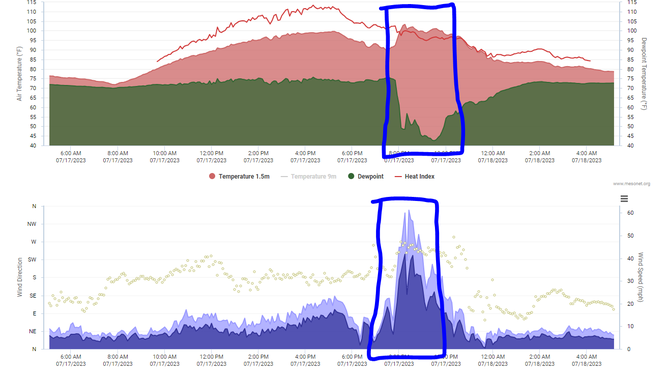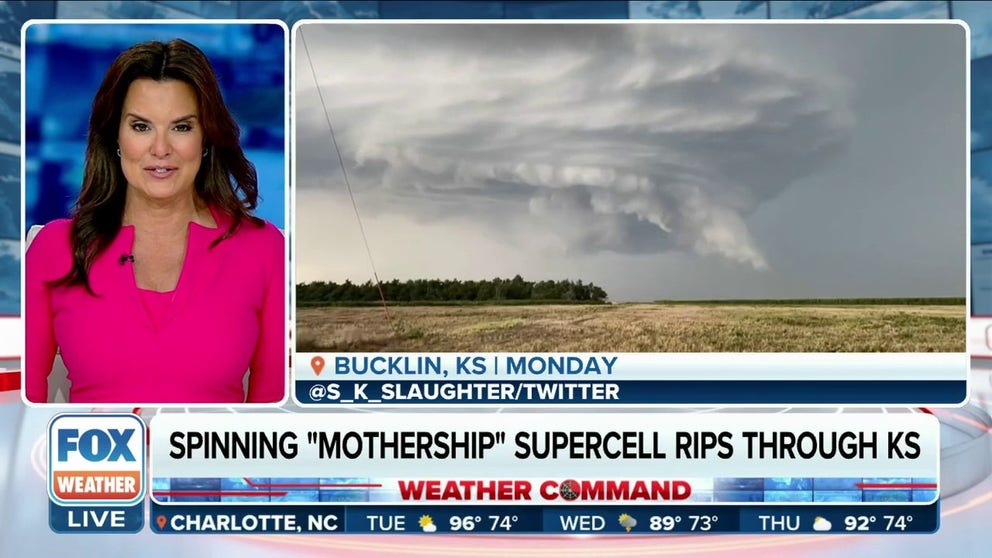Spinning 'mothership' cloud helps create rare meteorological phenomenon heat burst in Oklahoma
A massive supercell dominated the landscape in western Kansas on Monday. The spinning "mothership" structure over the horizon is named for it's alien-like appearance. FOX Weather breaks down the science behind this stunning storm and how it triggered a wave of warmth into Oklahoma.
Spinning 'mothership' supercell rips through Kansas
A stunning supercell thunderstorm careened through western Kansas on Monday. As it collapsed, the storm triggered a wave of warmth into Oklahoma.
CHEROKEE, Okla. – A stunning supercell thunderstorm that careened through western Kansas on Monday, then triggered a wave of warmth into Oklahoma as the storm collapsed.
"Yesterday, we saw two incredible weather phenomena happen during the afternoon and nighttime hours," said FOX Weather meteorologist Jordan Overton.
The first was a potent, long-lasting supercell, also known as a "mothership" supercell for its alien-like appearance, that battered parts of Kansas with a tornado and destructive hail.
SECRETS OF THE SPC: HOW DAILY CONVECTIVE OUTLOOK GRAPHICS ARE MADE

A stunning supercell thunderstorm careened through Bucklin, Kansas, on Monday, July 17, 2023.
(@rachelkknowles/Twitter)
Storm chances for Kansas were marginal, but warm, humid air fueled the storm. The atmosphere was then stirred up as that mass of hot air was pushed aloft.
"This supercell appears to ride an outflow boundary, which enhanced the updraft was able to keep it going for hours," Overton said.
The intensification of the thunderstorm activity brought a brew of violent winds and tall clouds forming giant hail. Some hail were as large as baseballs in Garden City, Kansas.

Massive hail stones were reported in Garden City, Kansas, on Monday, July 17, 2023.
(@mrrockford/Twitter)
Dying thunderstorm sends heat burst to town several miles away
As the decaying storm tracked south into Oklahoma, all the hot air started to plunge towards Earth's surface. The result was a heat burst which occurs when dry air inside a dying thunderstorm plunges toward the ground. Those outside at the time would say it felt like opening an oven.
A weather station in Cherokee, Oklahoma, recorded a spike in temperature from 90 to 103 degrees at 9 p.m. CDT. At the same time, winds gusted to 60 miles per hour. The humidity dropped from 61% to 14%.
"Just an absolutely incredible thing to see," Overton said.

A weather station in Cherokee, Oklahoma, recorded a spike in temperature from 90 to 103 degrees at 9 p.m. CDT on Monday, July 17, 2023.
(Oklahoma Mesonet)
Heat bursts need two things to form. First, there need to be dry and hot mid-levels of the atmosphere. Then, some sort of dissipating shower or thunderstorm is needed. They happen mostly during the spring and summer.
